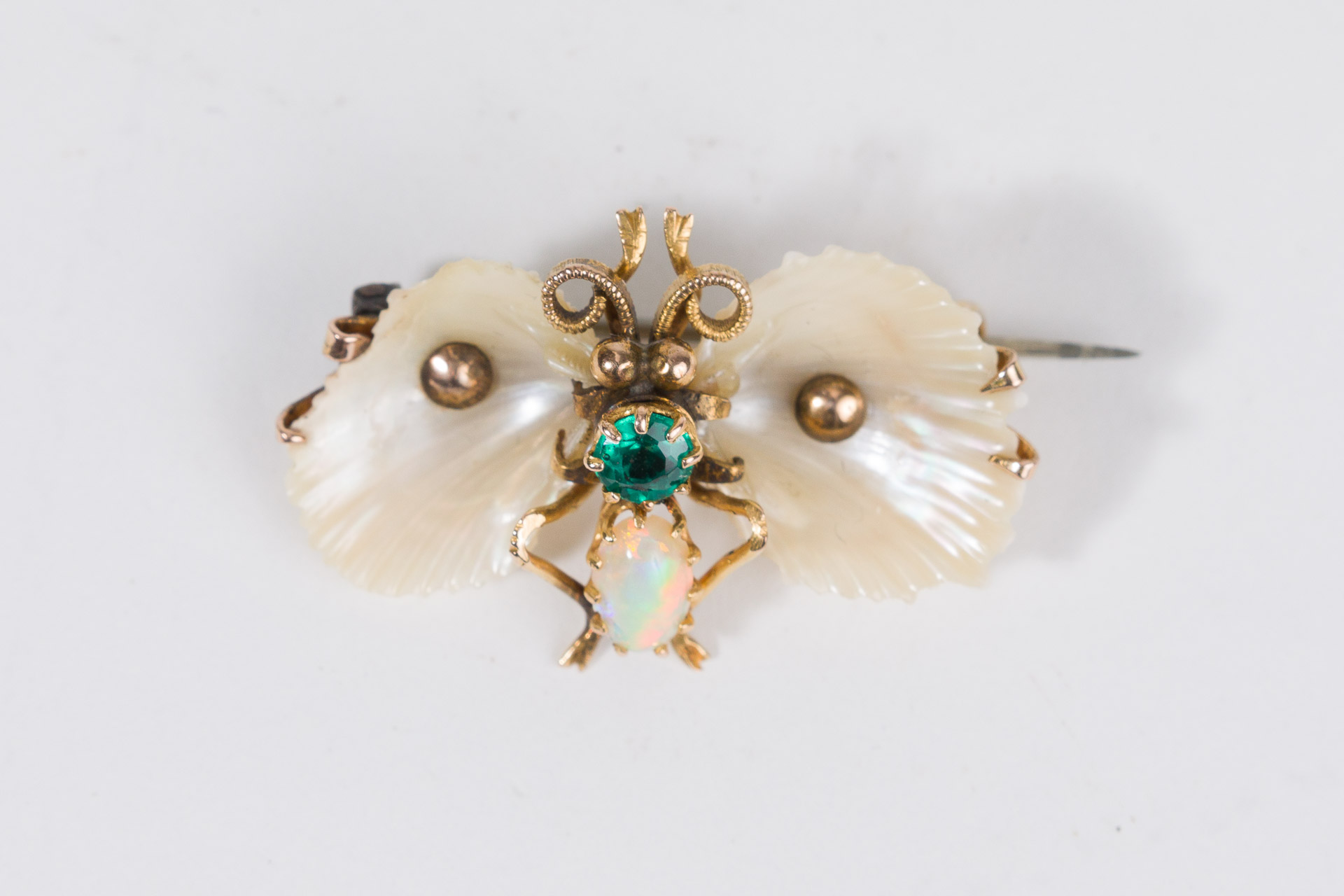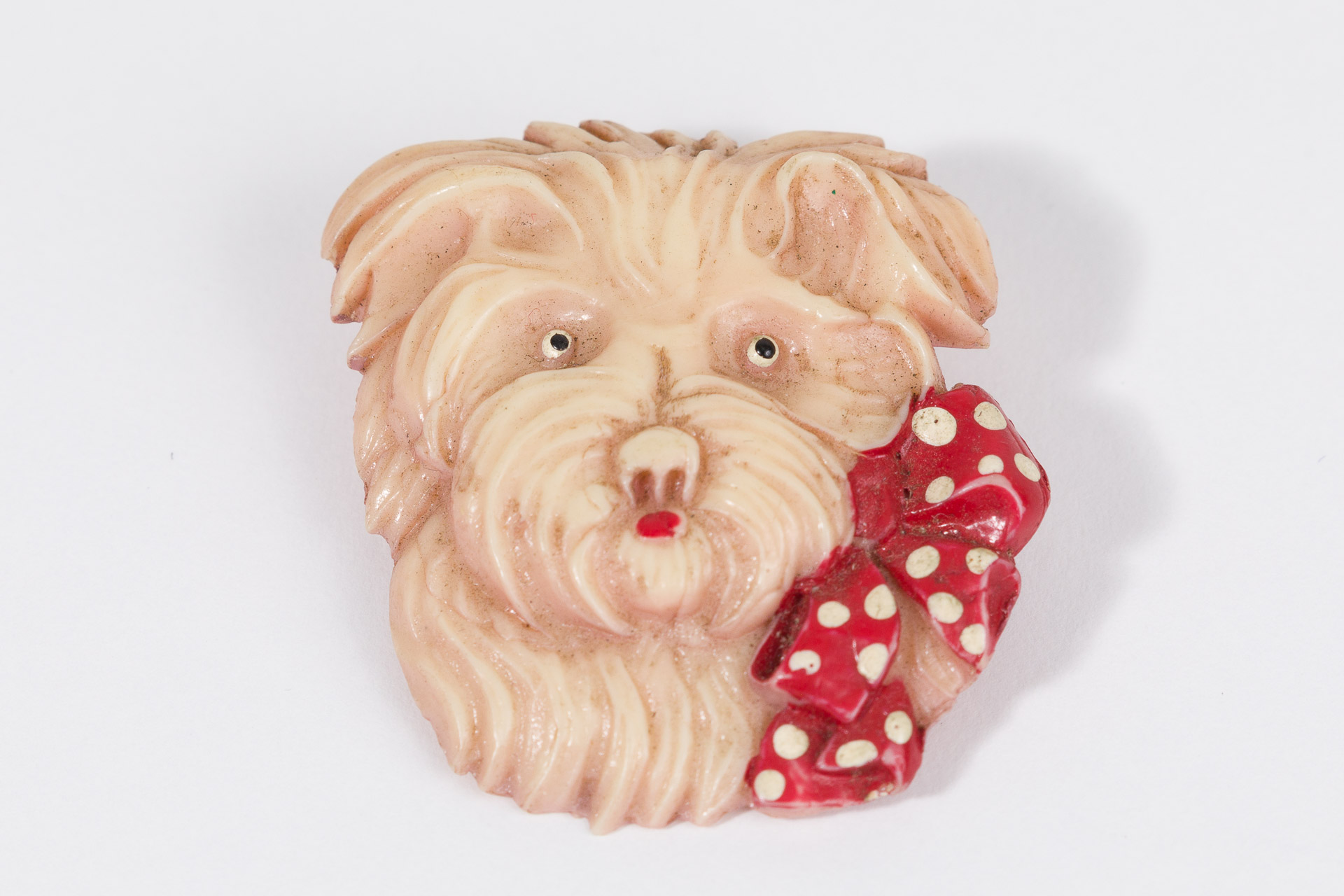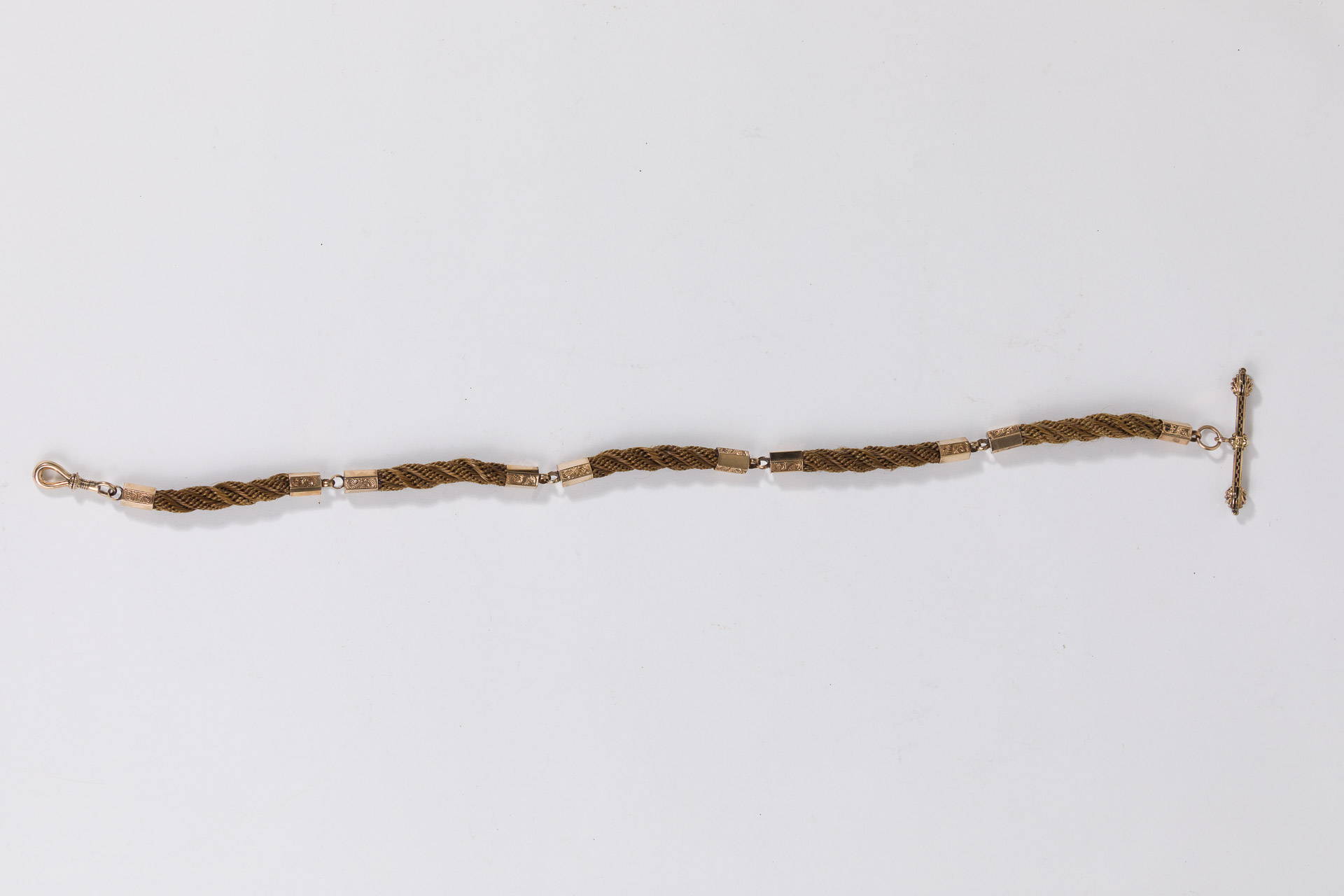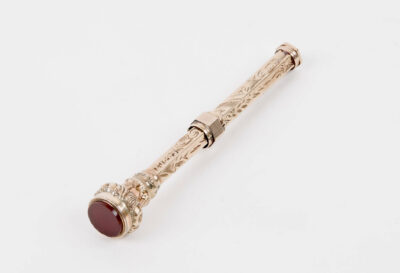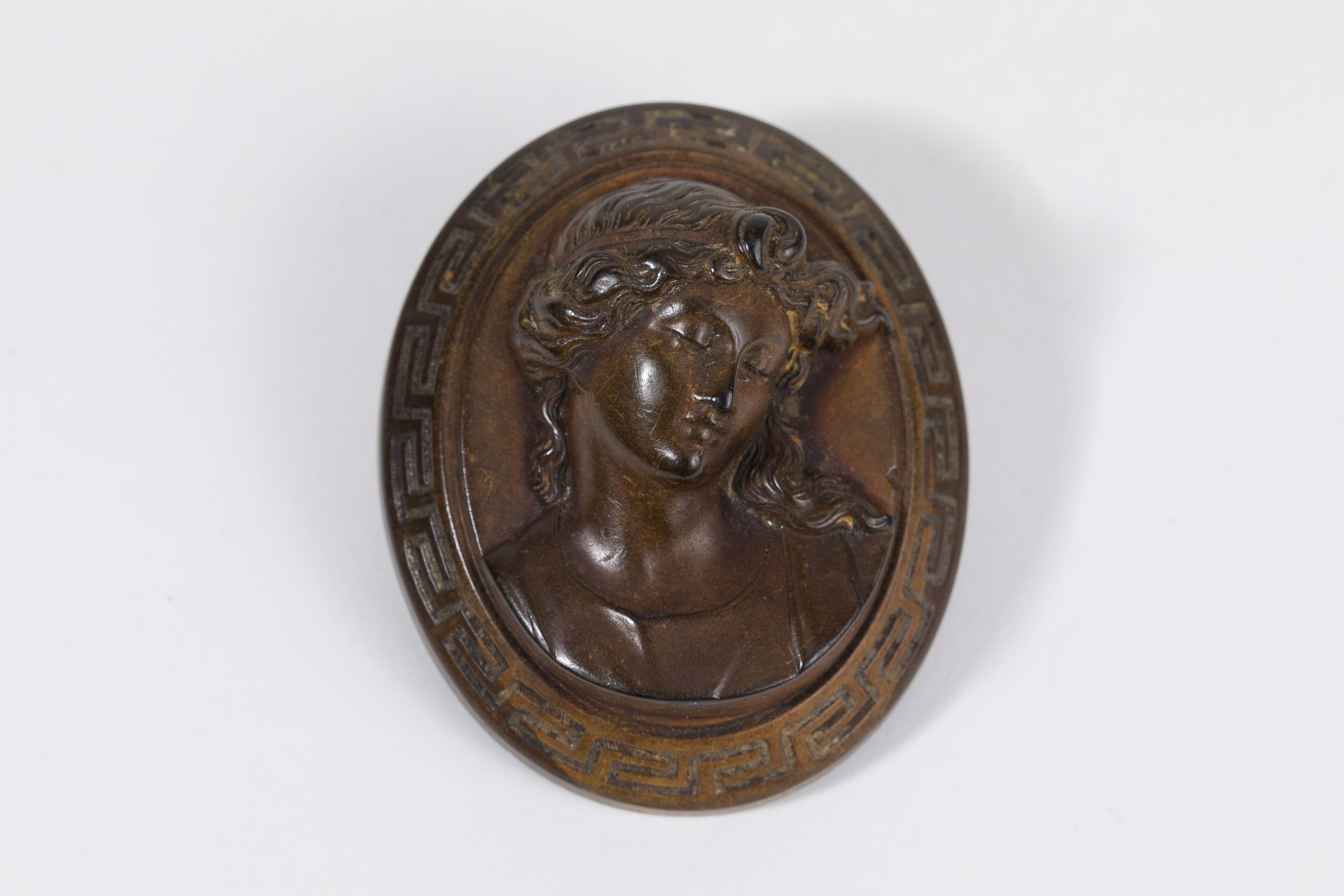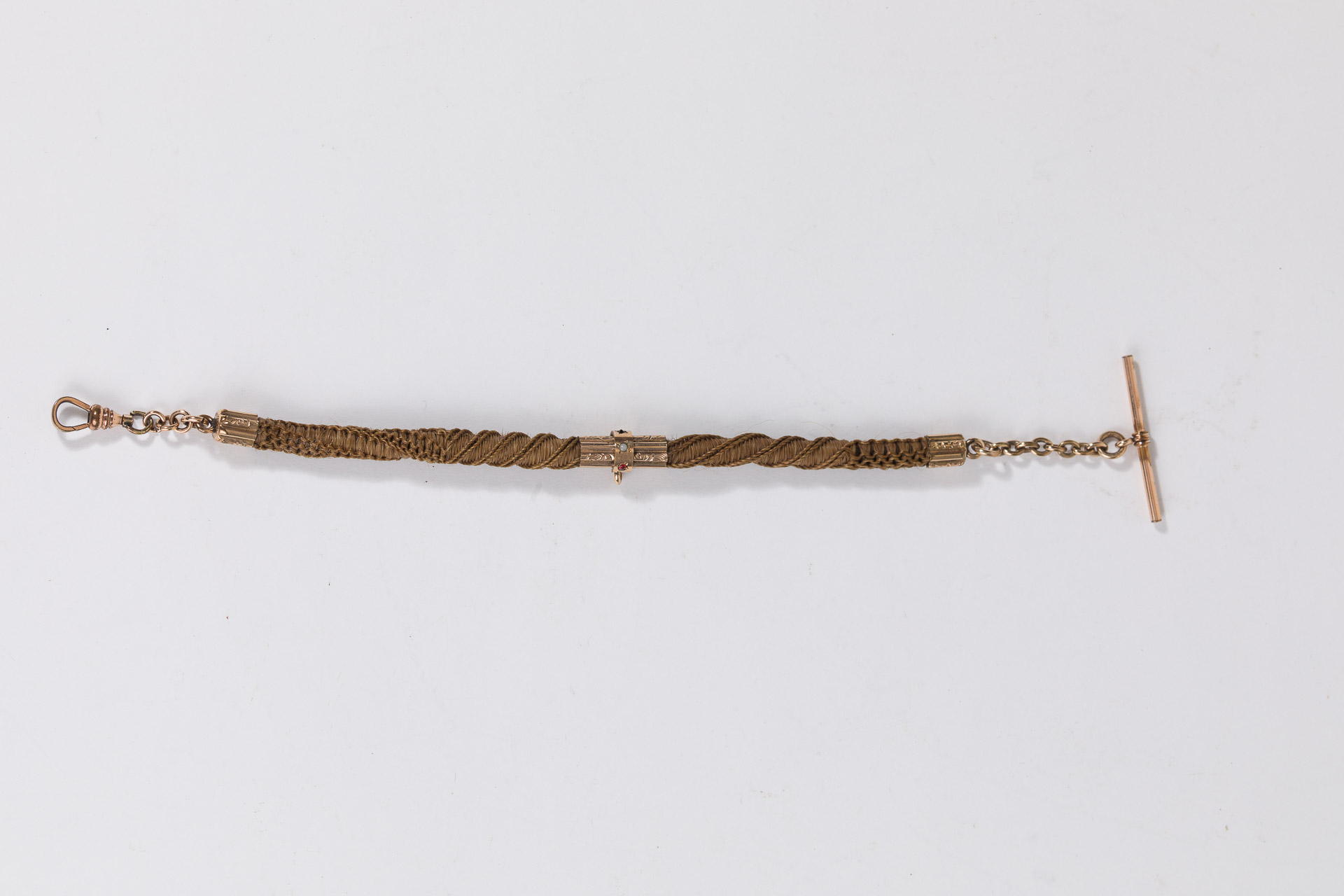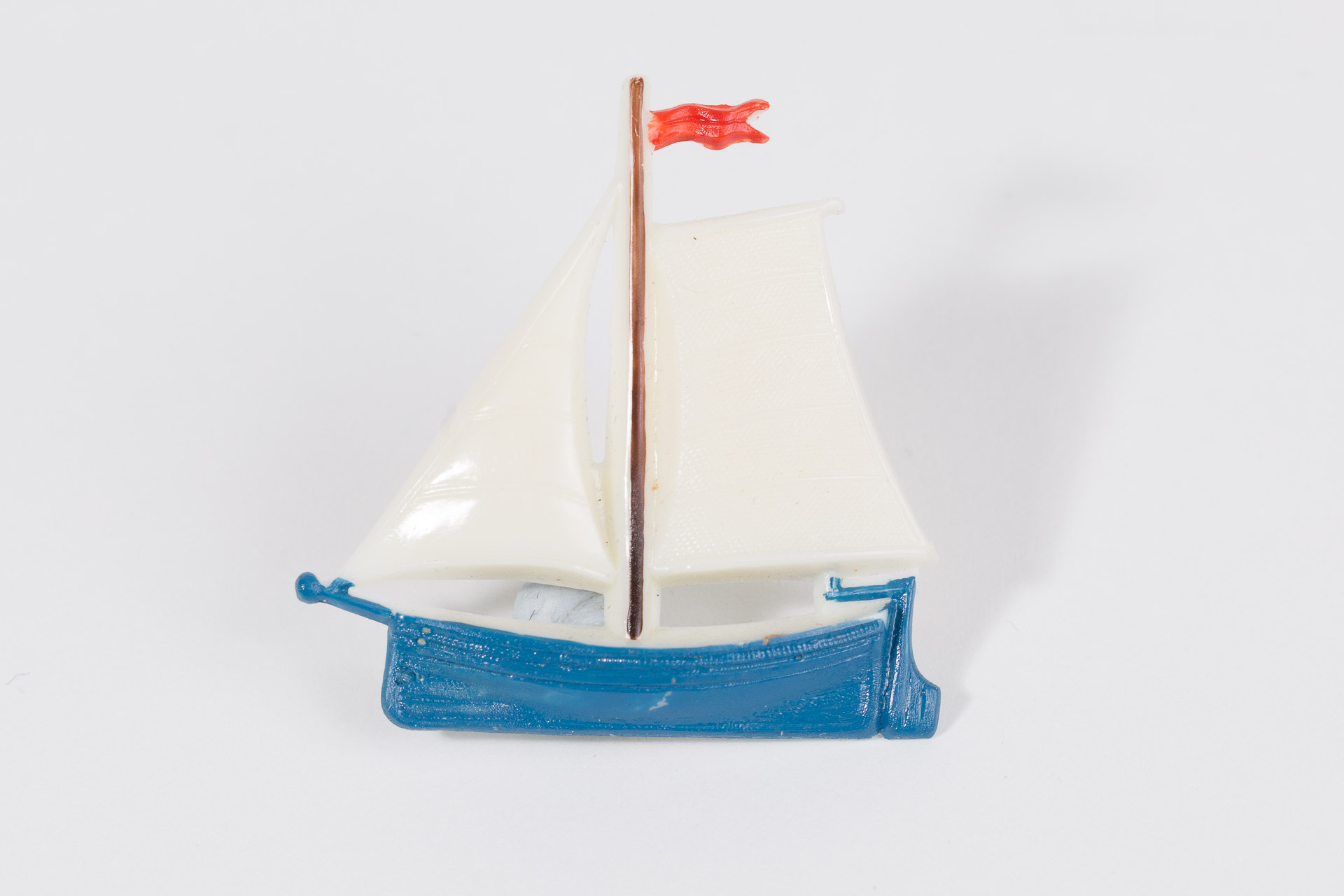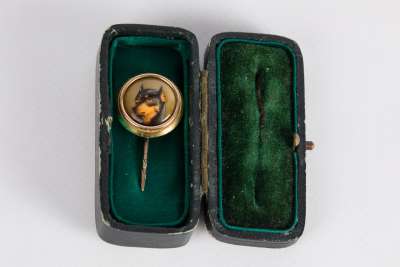This Australian insect brooch, crafted circa 1900-1920, presents a fascinating blend of natural materials and fine craftsmanship. Its body, fashioned in 9k gold, features the distinctive Tasmanian Trigonia shell wings, which are known for their triangular shape and concentric ridges with nodular outgrowths. The brooch is further enhanced by an opal and green stone doublet, adding a touch of colour and vibrancy. With its intricate design, this piece exemplifies the creativity and skill prevalent in early 20th-century Australian jewellery making.
Condition Report
The brooch is in very good condition, exhibiting minimal wear consistent with its age and use. The 9k gold maintains its lustre, with only minor surface scratches that are typical for jewellery of this period. The Tasmanian Trigonia shell wings are intact, displaying their unique texture without any noticeable chips or cracks. The opal and green stone doublet remain securely set and retain their original brilliance. Overall, this brooch is a well-preserved example of early 20th-century Australian craftsmanship, ready to be cherished by a new owner.
Dimensions
Weight: 1gm, Length: 4cm, Width: 2cm, Height: 0.5cm.
A Personal Adornment of Elegance
Brooches such as this were traditionally worn as a decorative accessory, often used to fasten clothing or as a standalone ornament. This particular piece, with its insect motif, would likely have been a conversation starter, reflecting the wearer’s appreciation for nature and intricate craftsmanship. The use of opal, a gemstone synonymous with Australia, further emphasises its cultural roots and makes it a unique addition to any jewellery collection.
Representative of Art Nouveau Influences
This brooch showcases elements characteristic of the Art Nouveau movement, which was prevalent during the late 19th and early 20th centuries. The naturalistic form, featuring the insect design, aligns with the movement’s emphasis on organic shapes and motifs. The use of opal and shell, materials celebrated for their natural beauty, further highlights the Art Nouveau style’s focus on harmonious design and artisanal craftsmanship. This brooch is a notable example of how global design trends influenced Australian jewellery makers of the era.
The Craft of Gold and Gemstone Setting
The brooch’s construction reflects the meticulous techniques employed by early 20th-century jewellers. The 9k gold frame provides a durable yet elegant setting for the opal and green stone doublet, both of which are carefully cut and polished to maximise their visual impact. The use of the Tasmanian Trigonia shell requires skill to shape and secure, ensuring its natural beauty is preserved. This piece exemplifies the jeweller’s ability to blend natural materials with precious metals to create a cohesive and appealing design.
Created by an Anonymous Australian Artisan
While the specific maker of this brooch remains unknown, it embodies the innovative spirit of Australian jewellers from the early 20th century. During this period, local artisans were increasingly incorporating native materials into their designs, setting their work apart from European counterparts. This brooch, with its use of opal and Trigonia shell, likely reflects the work of a jeweller who was attuned to both the natural beauty of the Australian landscape and the evolving tastes of their clientele.
Sought After by Collectors of Australian Jewellery
Collectors of early Australian jewellery are often drawn to pieces like this brooch for their unique combination of native materials and historical craftsmanship. The incorporation of opal, a gemstone with significant cultural and economic importance in Australia, enhances its desirability. Additionally, the use of the rare Tasmanian Trigonia shell adds an element of exclusivity. Such pieces provide insight into the regional identity and artistic trends of the time, making them valuable to both collectors and historians alike.
